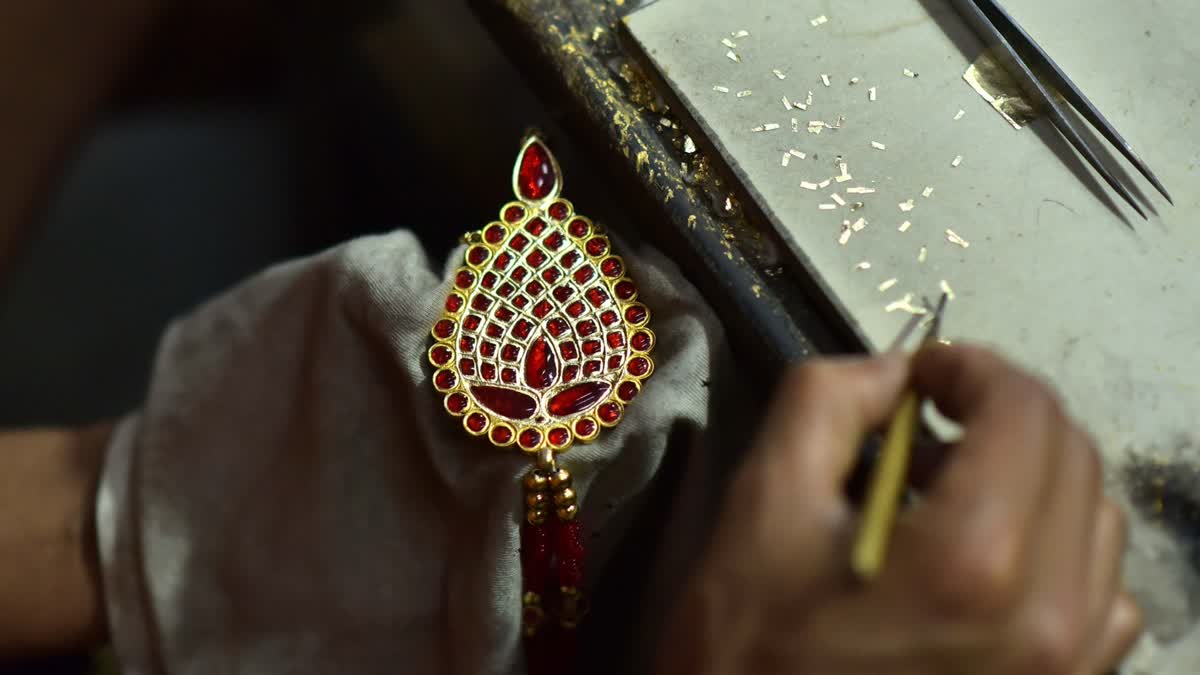Nagaon: After getting Geographical Indication (GI) tags for three traditional rice beers of Bodo community in Assam, it is perhaps time for another traditional item in Assam to ask for GI tag.
The Ranthali village in Assam's Nagaon district is now all set to apply for the coveted recognition from the Geographical Indication Registry for traditional jewellery industry, also known as Kesa Son or pat son.
Almost 90 percent villagers are engaged in making the traditional jewellery, which has been practised in the village for over 200 years. The artisans in the village use traditional jewellery items like Dugdugi, Jonbiri, Gam Kharu and many other such traditional items using pat son or kesa son (a thin layer of gold by beating the 24 carat gold) and using them on silver to make the jewellery.
"The Assamese traditional jewellery has a history of over 2000 years. In our village Ranthali, artisans have been practising the art of jewellery for generations for over 200 years," said Utpal Bania, an entrepreneur from the village. He said that while different traditional items from Assam have already got GI tags, we appeal to the government of Assam to take up steps so that the traditional Assamese jewellery also gets the GI tags which will protect the traditional item.
It may be mentioned here that the young generation of the village have also taken up interests in keeping the heritage industry alive and taken up entrepreneurial steps to secure financial independence. Bania, who was an engineer with Jet Airways, had left his lucrative jobs and devoted time to the industry. Utpal runs an organization Dugdugi, which not only commercially produces and sells traditional Assamese jewellery but also takes up steps to popularize Assamese traditional jewellery.
Bania had also been instrumental in organizing the Ranthali Durga puja, where all the idols like Goddess Durga, Ganesha, Kartik, Lakshmi and Saraswati with the traditional Assamese jewellery.
"We have been decorating the idols with traditional Assamese jewellery since last few years to make the items popular and encourage their usability by the people," he said adding that although there is a rise in demand for traditional Assamese jewellery, yet the heritage industry had not received any formal recognition so far.
Utpal said that a GI tag to the industry will protect it for any duplication and will give a unique identity to it.



